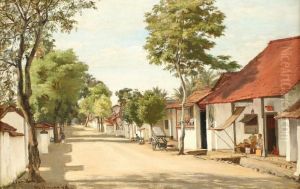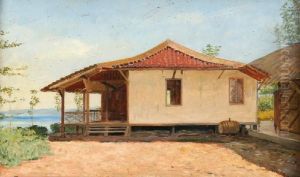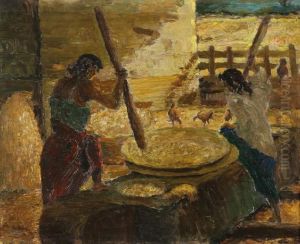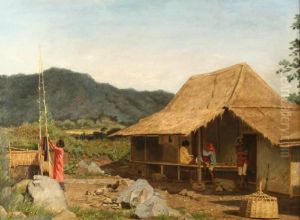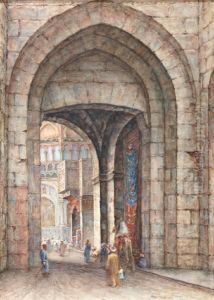Wilhelm Ch. Constant Bleckmann Paintings
Wilhelm Ch. Constant Bleckmann, also known as Wilhelm Christian Constant Bleckmann, was a Dutch artist born in 1847 in Nijmegen, the Netherlands. His artistic career spanned the late 19th and early 20th centuries, a period marked by significant transformations in the art world due to the advent of modernism and new artistic movements. Unfortunately, Bleckmann is not among the most widely recognized artists from this period, and as such, detailed biographical information about him is limited.
Bleckmann's work was primarily in the realm of painting, where he focused on genres that were popular among Dutch artists of the time, such as landscapes, portraits, and still lifes. These genres allowed him to explore the play of light and shadow, as well as the nuanced representation of the Dutch countryside and its inhabitants. Bleckmann's style would have been influenced by the broader trends of the time, including Impressionism and perhaps elements of Realism, which emphasized the depiction of contemporary life and the world as it was perceived visually.
Despite the scarcity of information about Bleckmann's life and career, it can be assumed that he would have received some form of artistic training, which was customary for artists of his era. He may have studied at a local academy or under the mentorship of an established artist. Throughout his career, Bleckmann would have been part of the artistic circles in the Netherlands, engaging with the artistic debates and developments of his time.
Wilhelm Ch. Constant Bleckmann passed away in 1920. His legacy, like that of many artists of his time, may not have achieved broad recognition, but his contributions to Dutch art would be part of the rich tapestry of 19th-century European art. His paintings, if they have been preserved, would offer a window into the aesthetics and concerns of a Dutch artist working at a time of great change in the art world.


